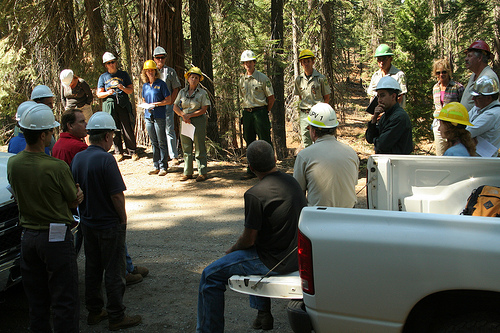
SNAMP participants holding on-site discussions during one of the many field trips held during the 10-year project.
After conducting extensive forest research and taking into consideration all aspects of forest health – including fire and wildlife behavior, water quality and quantity – a group of distinguished scientists have concluded that enough is now known about proposed U.S. Forest Service landscape management treatments for them to be implemented in Sierra Nevada forests.
“There is currently a great need for forest restoration and fire hazard reduction treatments to be implemented at large spatial scales in the Sierra Nevada,” the scientists wrote. “The next one to three decades are a critical period: after this time it may be very difficult to influence the character of Sierra Nevada forests, especially old forest characteristics.”
The scientists' recommendation is in the final report of a unique, 10-year experiment in collaboration: the Sierra Nevada Adaptive Management Project (SNAMP). A 1,000-page final report on the project was submitted to the U.S. Forest Service at the end of 2015. In it, scientists reached 31 points of consensus about managing California forests to reduce wildfire hazards and protect wildlife and human communities.
“SNAMP was founded on a desire to work collaboratively to protect the forests of the Sierra Nevada,” said John Battles, professor of forest ecology in the Department of Environmental Science, Policy and Management at UC Berkeley and SNAMP principle investigator. “The challenges are multifaceted with a huge diversity of perspective among the public, among managers, and among scientists. SNAMP tried to bring all these interests and talents together to safeguard a vital resource and a natural wonder."
SNAMP was created to help develop a collaborative management and monitoring plan consistent with the Sierra Nevada Forest Plan Amendment...
